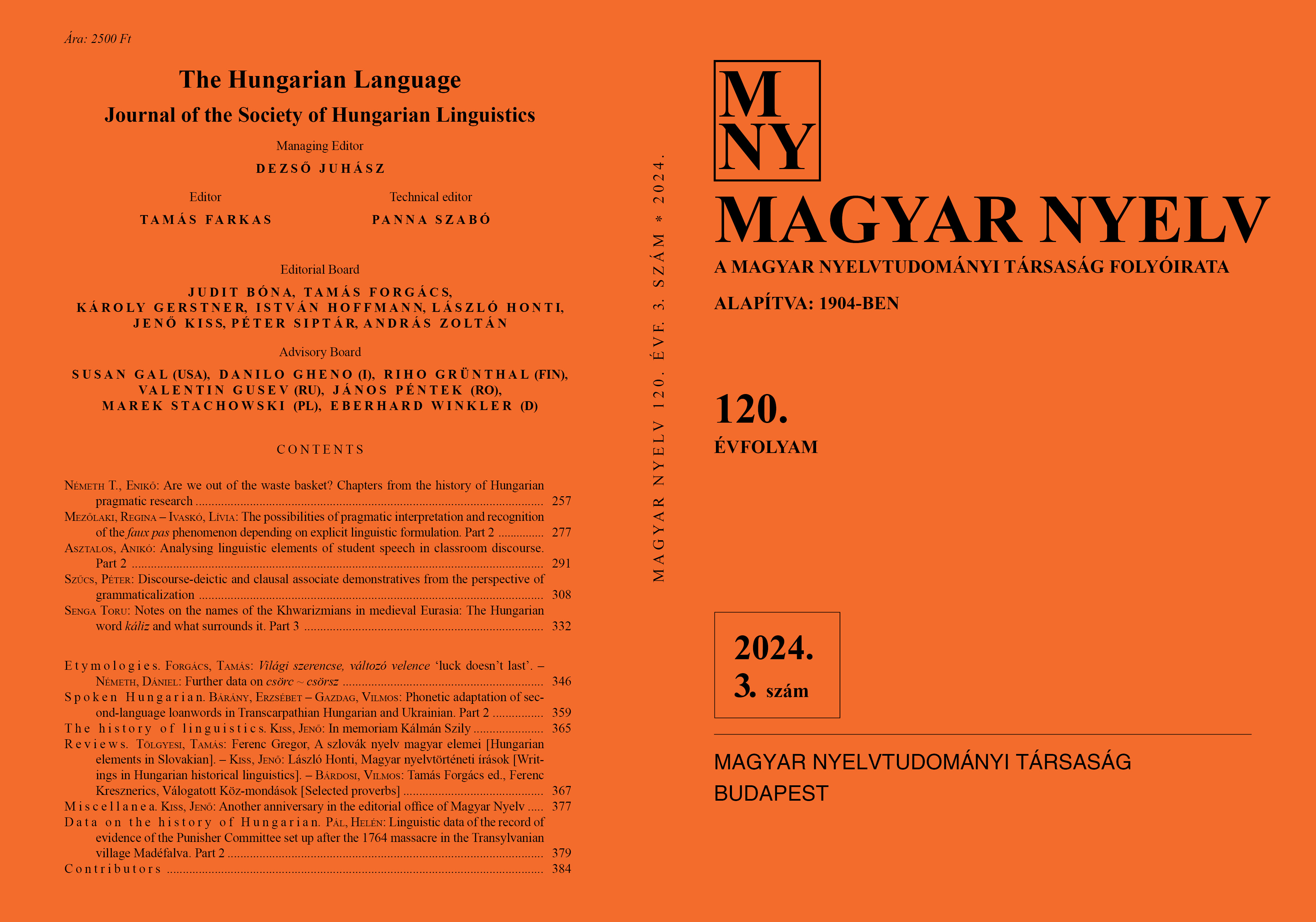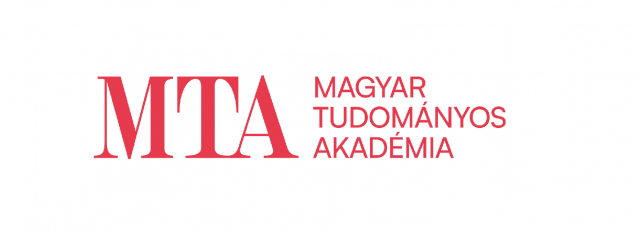Azt/úgy/olyat hallottam: magyar demonstratívumok grammatikalizálódása endorfikus használatokban
DOI:
https://doi.org/10.18349/MagyarNyelv.2024.3.308Kulcsszavak:
demonstratívum, diskurzusdeixis, utalószó, grammatikalizációAbsztrakt
A dolgozat három magyar mutató névmástípust (határozószói, főnévi, melléknévi) vizsgál meg diskurzusdeiktikus és utalószavas előfordulásokban grammatikalizálódási szempontból. Diessel (1999) és König (2020) szempontrendszerét felhasználva a használati és formai tulajdonságaikat áttekintve és az így nyert adatokat értelmezve megállapítható, hogy eme endoforikus használatok különböző mértékben grammatikalizálódottnak tekinthetőek, de egyik előfordulás sem tekinthető a grammatikalizációs kontinuum végén lévő, teljesen jelentés nélküli, kizárólag funkcionális használatnak. A tanulmányban külön figyelmet kap a deiktikus jegy, mely az eltérő szerkezetekben különböző módon értelmeződik (diskurzus térben való figyelemirányítás, kognitív prominencia). Ez a megközelítés lehetővé teszi a grammatikalizáció és azon belül különösen deiktikus jegy szerkezeti és kognitív aspektusainak együttes vizsgálatát, és így mélyebb megértést nyújt azok használati körülményeiről és jelentéstartalmáról.
##submission.downloads##
Megjelent
Folyóiratszám
Rovat
License
Copyright (c) 2024 Péter Szűcs

This work is licensed under a Creative Commons Attribution-NonCommercial-NoDerivatives 4.0 International License.
A periodika Open Access hozzáférésű (Gyémánt). A dokumentumok elektronikus formában szabadon elmenthetők, másolhatók; változtatások nélkül, a forrásra való hivatkozással használhatók. Az alkalmazás kereskedelmi célokat nem szolgálhat. Bármilyen terjesztési és felhasználási forma esetében az 1999. évi LXXVI. szerzői jogról szóló törvény és az ahhoz kapcsolódó jogszabályok az irányadók. Elektronikus változatára a CC BY-NC-ND (Creative Commons – Attribution-NonCommercial-NoDerivatives) licenc feltételei érvényesek.
A folyóirat a szerzők számára időbeli korlátozás nélkül és díjmentesen engedélyezi, hogy kézirataiknak a szerkesztőség által elfogadott, akár a lektori javításokat is tartalmazó, de nem végleges (ún. pre-print) változatait közzétegyék: e-mailen, a szerző vagy intézménye honlapján, illetve a szerző intézményének, egyetemének zárt vagy korlátozás nélkül elérhető repozitóriumában, illetőleg egyéb non-profit szervereken. Amikor a szerző ily módon terjeszti művét, figyelmeztetnie kell olvasóit, hogy a szóban forgó kézirat nem a mű végső, kiadott változata. Ha a cikk végső változata már megjelent nyomtatott, illetve online formában, mindenképpen javasolt és engedélyezett a szerzőnek ezen (post-print) változatot használnia. Ebben az esetben meg kell adnia a folyóiratbeli megjelenés pontos helyét, adatait is. A szerző a közlemény szerzői jogait megtartja, esetleges másodközlés esetén azonban a cikk első megjelenésének bibliográfiai adatait is közölnie kell.




